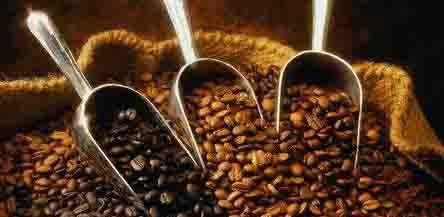Analysis of the main components and functions of small seed coffee
Coffee is one of the cash crops whose chemical composition has been fully studied. More than 850 compounds have been isolated from cooked beans in the laboratory. One third of them belong to aromatic substances.
However, coffee has always been the most controversial beverage. Since the discovery of coffee nuts in the 5th and 6th centuries AD, there has been controversy over whether coffee is a healthy drink.Commercial coffee roastersSales have fluctuated as a result.
In 1933, Dr. Hawke, a pharmacologist at the university of Chicago, conducted a research on "the influence of coffee on solving chess puzzles", and proposed that caffeine could help solve chess puzzles. For this reason, coffee was called "smart drink" in the United States. By 1950, coffee sales in the United States soared.
At the same time, the medical community proposed that drinking coffee can cause heart disease, high blood pressure, cancer, etc., after 1982, sales began to decline sharply. After 1990, starbucks and other "health-promoting research reports" saw sales rebound.
China first introduced it from Taiwan province in 1884Microwave drying machinery and equipmentLater, yunnan, hainan, guangxi, fujian, guangdong and other provinces also introduced planting successively. After more than 100 years of development, the national coffee planting area reached 120,000 hm2 by 2015. Coffee is an important tropical cash crop and characteristic agricultural industry in hot areas of China.
The annual growth rate of coffee consumption in China is 10% ~ 15%, much higher than the 2.5% growth rate in the world. With the change of dietary habits and the influence of western culture, especially with the economic development, China may become one of the countries with the largest coffee consumption in the world in the next 10 years.
However, people still have a superficial understanding of the composition and function of coffee. Through the analysis of the composition and function of small seed coffee, it is helpful for coffee producers and consumers to have a correct view of coffee drinks, and provides a reference for the study of coffee chemistry and function.
The results show that coffee contains rich chemical substances, including carbohydrate, protein, amino acid, alkaloid, chlorogenic acid, ester and other complex components.
The main substances produced in the roasting process of coffee are divided into non-volatile compounds and volatile compounds. Volatile compounds play an important role in the aroma of coffee, while non-volatile chemicals mainly determine the bitter, astringent, sour and sweet taste of coffee.
. Coffee flavor is mainly produced in the roasting process, there are different 907 kinds of aroma components, but not each of these compounds are characteristic aroma composition, 28 kinds of main characteristic aroma composition in the coffee, the aroma components, respectively is: sweet/caramel, earthy, baking, nuts, chocolate), smoked, phenolic flavor, fruit flavor, spicy.
Volatile component analysis of coffee has never been interrupted, but until now, the chemical changes of coffee in the roasting process have not been fully understood, mainly because the chemical changes of coffee beans in the roasting process are difficult to simulate and reproduce under laboratory conditions.
